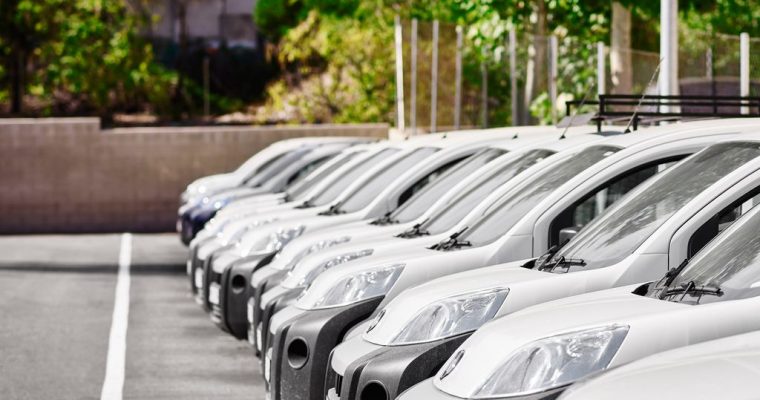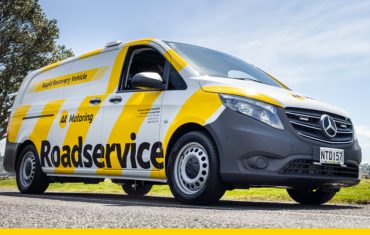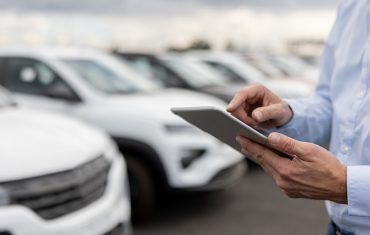
How to manage your vehicles efficiently
Fleet ManagementLooking to minimise your vehicle fleet costs in 2019? Managing vehicle costs and maximising the value your vehicles offer your business requires a broad perspective. It requires you to consider cost and value from the beginning of the process of keeping your business on the move.
Your process for deciding how best to get your people and equipment where they need to go look to minimise cost in all aspects of your fleet’s management. The good news is that there are opportunities to save and maximise value throughout all aspects of the process of selecting and managing your vehicles.
The NZTA recommends three ways to achieve more efficient business travel management:
- Reduce the amount of travel
- Improve the efficiency of the travel
- Reduce the cost per kilometre of travel
When it comes to fleet management there a number of ways to achieve these goals and enjoy the cost savings they offer:
- Think through your mobility needs before considering your vehicle needs
- Review your vehicle policies in the context of all mobility options to minimise vehicle use
- Replace vehicles at the optimum time to maximise value and minimise costs
- Choose vehicles on the basis of their total cost of ownership over their useful life
- Make vehicle and fuel choices on the basis of needs and profitability not vehicle desires
- Employ the latest vehicle tracking and management technology to identify savings
- Make full use of the data and information that new technology offers
- Ensure that you are aware of advances in technology that can offer you cost savings
- Embrace new vehicle technology and the savings it can offer through greater efficiency
Mobility versus fleet management
Let’s take a step back from vehicle fleet management for a moment.
What is the purpose of your vehicles and their management? Easy: meet your needs to transport staff and the stuff they need to do their jobs to the places they need to go.
The danger here, though, is in not thinking those needs through carefully. It’s in ignoring new technology and transport option infrastructure changes that could potentially reduce those needs. The number of vehicles you need is very likely to have changed in the last few years whether you realise it or not.
When it comes to reviewing vehicle needs and policies and finding ways to reduce vehicle costs its important to think mobility before you get to transport. It could be that your transport needs can be reduced with a little help from technology:
- How many times do your staff actually need to meet personally with clients? Perhaps, you can reduce the number of client visits in favour of Skype and other forms of video chat to reduce transport costs. There are many cost efficient alternatives to business travel.
- Is there technology or software that could be deployed to monitor products or services? Perhaps, remote monitoring can reduce the need for technicians to visit clients.
- Have public transport options improved to the point where staff can make use of them for your business’s needs? Maybe, reps in urban areas no longer need their own vehicle because of eScooter options or improved train services.
- Could allowing staff to work from home for a portion of their working week reduce their transport needs? New communications technology reduces the need to be in the office to do your job.
If you live in Auckland, you are acutely aware of the potential impact of changes in transport infrastructure on your business. But have you thought about how the $28b Auckland Transport Alignment Project might affect your mobility and transport needs?
How these sorts of factors apply to your business will depend on its nature. But the important thing is to make sure that you are a clear on your mobility needs and think about ways to minimise your transport needs.
Reviewing vehicle policies
Have you got a workplace travel plan? As outlined by the NZTA, there are many benefits of planning workplace travel but tellingly “reduced travel costs for businesses” is top of the list. If you have thought through your mobility needs carefully and determined your actual need for business travel, you could find that you could potentially enjoy more cost-efficient mobility through:
- Reduced direct travel costs
- Reduced Mileage claims
- Reduced staff downtime related to travel times
- Reduced fleet running costs
- Improved image because of reduced emissions
There’s a reason reducing fleet size and cutting kilometres travelled are the top 2 items on Fleet Financials’ list of ways to reduce fleet costs.
You could find that you need fewer vehicles simply by encouraging staff to use public transport where practicable, think carefully before they grab a pool car and think about ways to share vehicles. You’ll definitely find savings, if you review your policies around eligibility for company vehicles and whether particular staff enjoy exclusives access to a vehicle.
We have previously considered vehicle policies in the context of reducing emissions. But the financial benefit of efficient vehicle use policies is a great way to reduce your fleet and mobility costs.
Optimal vehicle replacement
Minimising fleet costs is not just about minimising the number of vehicles and their use. Its also about ensuring that vehicles are replaced at the optimum time.
Older vehicles are more expensive to run. As vehicles age their operating costs – fuel, servicing, downtime related to servicing, out-of-warranty repairs, etc. – increase. And, as the trend is for vehicles to become more efficient over time, the cost associated with fuel is compounded by lost savings, which a newer vehicle would have offered you.
But aren’t they less expensive to own? Yes. Depreciation costs will reduce over time. And your vehicles’ monthly loss in value – through reduced used-vehicle market price – will also reduce over time.
The trick here is to determine when running costs are increasing faster than capital costs are decreasing. Then the vehicle is costing you more money than it should. And accurate planning for vehicle replacement is key to minimising vehicle fleet costs.
Total cost of ownership
You’ll note that we considered running and capital costs in assessing when best to replace vehicles. Ignoring either type of cost would have given us a distorted view of the value of vehicles.
And the same principle applies when you are considering replacement vehicles. You need to consider the total cost of ownership of a vehicle in order to maximise vehicle value.
If you only look at what a vehicle will cost you to buy or use (as in an operating lease) you get a distorted view of the vehicle’s value.
A more affordable vehicle might not come with the same servicing commitment or warranty as more expensive options. And it might be less fuel efficient. Over 3-4 years it could cost you more to own.
Likewise, a more expensive vehicle might offer such significant savings over time that the initial capital cost is justifiable. This often applies to electric vehicles, which offer huge savings in running costs.
So, whenever you are working through a vehicle funding decision process, it’s essential to consider total cost of ownership or whole of life cost.
Fuel and vehicle choices
We have previously looked at ways to reduce your vehicles emissions. At the time we pointed out the close link between reducing emissions and minimising vehicle costs.
In short: your vehicle choices are key to gaining maximum value from your fleet. Get our fuel and vehicle choices right and you set yourself up for future savings.
There are three key questions to ask here:
1. “What fuel should your vehicles run on?”
Traditionally the answer has been petrol or diesel, with LPG and CNG never significant options. And that has generally meant petrol for cars and diesel for utes, vans and larger SUVs. But the growing popularity of electric vehicles (EVs), is set to change that. The running cost savings offer by EVs are harder and harder to ignore as the range and availability of them grows.
2. “Can you reduce costs and emissions with EVs?”
This question follows on from the first. And your answer will depend on how your vehicle needs match up with EV options. It’s also important to understand that hybrids offer a middle ground where range issues might mean EVs can’t meet your distance needs. If you need small vehicles for short urban trips, you need to be looking at EVs seriously, if you’re serious about minimising mobility costs.
3. “What are my vehicle choices?”
Resist the urge to go with your favourite brand or the most popular vehicle. Think carefully about your needs and the comparative costs of options. Note: supply and demand pressures often mean popular brands are likely to be more expensive. And you’ll find leasing companies can offer better discounts on brands that are trying to achieve market share over those that have it.
Hint: favouring vehicle needs, over desires, and considering total cost of ownership can pay off in your business’s improved profitability.
Cost saving initiatives for 2019
We’ve already explored how technology changes can reduce a business’s need for vehicle and reduce associated costs. And we’ve looked at the potential savings offered by ever-improving EV options.
There’s another key bit of technology that can offer you significant savings through increased efficiency of travel and reduced costs per kilometre.
Telematics technology can make managing your fleet much easier. The combination of tracking vehicle movements and how drivers are behaving can offer significant savings. The data collected will help you identify everything form inefficient routes and unnecessary downtime to poor driving practice that causes excessive fuel use.
You might be surprised what potential savings a deep dive into your vehicle use produces. Our telematics partner, Smartrak looking at the potential cost of idle time, for instance. Idle time varies with vehicle use – delivery vehicles are likely to idle a lot more than vehicles that provide transport to jobs – but idling costs money. Even a passenger vehicle could burn up to two litres of fuel in a hour of idling over a day. And Smarttrack suggests that an hour of idling is equivalent to 40km of wear and tear. The resultant fuel and maintenance costs add up over the life of a vehicle.
Fleet data management
There is a bit of a trap with the ability of telematics tracking and software to monitor your fleet… Data overload.
Collecting data is all very well. But it has limited value, if you don’t act on what the data tells you. And that requires you to dig into the data for what it reveals.
It’s all to easy to enjoy the ease of collecting fleet data offered by telematics for required reporting purposes, like FBT reporting, etc. and neglect to get the full value from it. As our US colleagues suggest, “utilisation of data us crucial for proper vehicle performance and driver efficiency.” That means not only collecting data but using it to find possible efficiencies — like reduced idle times or better route coordination.
Considering employing telematics technology in your business? Make sure you set yourselves up to make proper use of the data it collects.
What fleet managers should be thinking about in 2019
We started looking at ways to get more value from your vehicles on the basis of NZTA’s three ways to reduce business travel costs: less travel, more efficient travel and lowering costs per kilometre travelled.
There are a couple of other themes that affect just about every aspect of the ways we are suggesting you minimise vehicle costs here:
- A drive to reduce the environmental impact of transport — it is responsible for 20% of emissions in NZ and this is a key factor in government policies favouring public transport and EV adoption. And both public transport and EVs offer potential savings – through reducing vehicle use and reduced running costs, respectively.
- Technology is the friend of anyone looking to reduce their vehicle costs. Whether it is increasingly efficient vehicles or EVs, or tracking technology and the insight it offers, technological advances offer potential savings.
We will explore things that anyone managing vehicles in 2019 in more depth in an upcoming blog. But it is important that you investigate how technology can help you reduce vehicle costs in managing your fleet in 2019.
In many cases the upfront cost of embracing the latest technology will offer savings over time that will far outweigh that cost. Investing in EVs and telematics are two examples where a little upfront investment will pay dividends over time.
And its important not to forget that these new technologies often come with environmental advantages that will grow in value over time. As resources become scarcer, they will become essential and people will increasingly value low environmental impact options.
Save with new vehicle options
Speaking of new technologies… Fully autonomous vehicles may be a little while way from going main stream. But they are coming. (Christchurch Airport is already testing one for shuttling passengers to the terminal.) And they will feed into a new transport environment that means a reduced need for vehicles.
Factor in the question of whether we will own anything by 2030 and you have quite a different looking transport future. A future where your need for vehicles might be much reduced.
In the meantime, it is essential to understand the potentials savings your 2019 vehicle options and the new technology vehicles now come with and consider embracing the latest technology. The upfront cost might be higher, but you will be future proofing your business.
That’s why we think EVs are the new black. And why we think it might be time to update older vehicles sooner rather than later…
Reducing vehicle fleet costs in 2019
Getting maximum value from your vehicles in 2019 requires you to take a broader perspective on your mobility needs and explore the potential advantages of new vehicle technology and fleet management software.
To truly understand the total cost of ownership of vehicles you are considering today you need to think well beyond their capabilities and upfront costs.
Overwhelmed by all the factors you need to consider?
Contact our fleet management professionals to explore ways to improve the efficiency of your vehicle fleet and save on your vehicle costs.
 Driving Insights
Driving Insights




